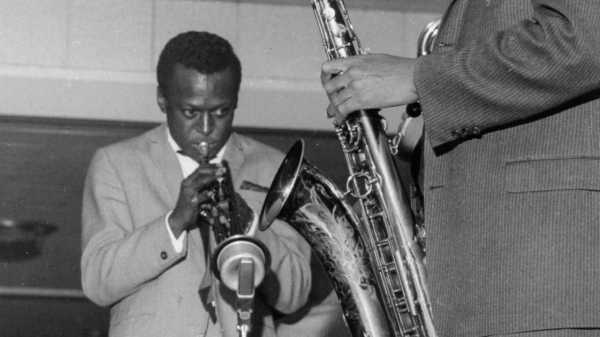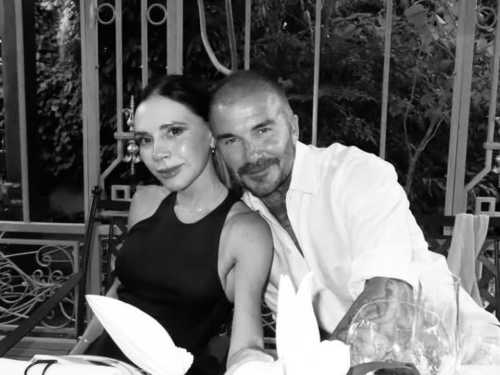
There’s a great story behind “Miles Davis and John Coltrane—The Final Tour,” the sixth volume in Sony’s “Bootleg Series” of live recordings by
Davis (it comes out March 23rd), and that story makes itself heard in
the music. In 1960, the trumpeter Miles Davis, along with his regular
band, was booked to go on a concert tour in Western Europe as part of
the ongoing, and internationally famous, “Jazz at the Philharmonic”
concert series. However, at exactly that time, Coltrane, who played tenor saxophone, was preparing to
leave Davis’s quintet and form his own working group. Coltrane had been
a sideman with Davis on and off since 1955; they were both born in 1926,
but their careers took drastically different paths. Davis was already a
minor star in 1945, at the age of nineteen, when he recorded with
Charlie Parker. Three years later, at twenty-two, he led a nonet,
featuring intricate arrangements, that proved vastly influential.
(They’re gathered under the title “Birth of the Cool.”) Davis had a huge
and significant discography as a leader by the time he hired Coltrane,
an unheralded musician best known as a rarely soloing sideman, who’d
never yet led a record date. With Davis, Coltrane quickly found his
voice, and expanded it during a stint in 1957 with Thelonious Monk. Coltrane had
led dates on several labels; recorded the influential “Giant Steps,” in
1959; and was ready to go out on his own.
Davis’s group, featuring the pianist Wynton Kelly, the bassist Paul
Chambers, and the drummer Jimmy Cobb—which had been a sextet for several
years, featuring Cannonball Adderley’s alto sax alongside Coltrane’s
tenor—was now depleted. Adderley left in the fall of 1959, and Coltrane
was feeling his oats. On club dates, Cobb said, Coltrane “would play an
hour solo himself, and we were only supposed to be on the stand for
forty minutes or something.” Prior to the European tour, Coltrane told
Davis that he wouldn’t join him there, and even recommended another
tenor saxophonist to Davis, Wayne Shorter, who was only twenty-six.
(Davis actually hired him—in 1964.) But, because Coltrane was familiar
with the band’s material, Davis prevailed upon Coltrane to join him one
last time for the European tour. Coltrane agreed, grudgingly; according
to Cobb, Coltrane displayed his discontent throughout the tour: “He sat
next to me on the bus, looking like he was ready to split at any time.
He spent most of the time looking out the window and playing
Oriental-sounding scales on soprano.”
In fact, Coltrane made exemplary use of his time on that tour, working
out his musical ideas more fully, audaciously, and radically than he had
ever done in his previous studio recordings. Davis is in fine fettle
throughout the tour; Coltrane plays with fury. As he did in American
clubs, he plays longer solos (often much longer) than Davis does (not
hour-long, though) and often gets much more applause than Davis does.
By bringing Coltrane back into the group for this European tour, one of
the band’s most prestigious showcases, Davis in effect relegated himself
to the role of a sideman in his own band.
Coltrane’s solos range from the overwhelming to the astonishing to the
devastating to the outrageously playful. He developed ideas that he
had been working on throughout the late fifties, ideas that took the
harmonic complexities of bebop to a new level. What he had been doing in
the late fifties was, essentially, playing every note of the chords that
provided the tune’s harmonic structure—and when he substituted (in the
classic bebop form) new chords for familiar ones he played all of those
notes, too. It made for lots of notes that he played very fast, in long
breaths, with a vibrato-free, hard-steely tone that led one critic of
the era, Ira Gitler, to immortalize Coltrane’s style at that time as
“sheets of sound.” In “The Final Tour,” the sound is of Coltrane ripping
the sheets to shreds. He played plenty of high-velocity rushes of notes
here, too, but also broke off and fragmented those long lines. He
wrenched them apart with low-end blasts, mid-range cries, and
high-pitched shrieks, moving away from the musical sense of notes and
chords toward pure sound—a dramatic tendency that he took to ecstatic
extremes with his own groups.
Before this release, the music from the quintet’s European tour was
available—exactly as the “Bootleg Series” suggests—through unauthorized
releases. (Several of these concert recordings, including the ones in the Sony set, were officially made for
radio broadcast.) They’re already familiar—mainly to fanatics trawling
used-CD shops. (I’ve collected bootlegs of the tour for decades; there are about eight disks full of them, and they’re
among my favorite jazz recordings.) “The Final Tour” offers three of the
group’s concerts, including the two crucial ones from the tour. In their
Paris performance, on March 21, 1960, the first night of the tour, Davis
starts playing full-throated and elbows-out, and Coltrane responds by
going wild, throwing down a gantlet, not to Davis or even to his
audience but to himself. His performances were received as a succès de
scandale. During and after several long and furious solos, members of
the audience can be heard whistling (the local equivalent of booing).
But there are also plenty of boisterous cheers. (I heard, anecdotally,
from a friend who attended the concert, as a teen-ager, that
even the passionate cognoscenti—meaning he and his friends—were Davis
aficionados who came in knowing little about Coltrane but took him up as
a new hero that night.)
The next night, in Stockholm, Davis seems somewhat guarded, not struggling to keep up but wary, as if he were defending some border of
musical order. By contrast, Coltrane followed his Paris outburst with
some lofty philosophical playfulness, picking a pair of notes from the
melody and repeating them, rocking back and forth between them as if
examining their gleam in the light, working them out bit by bit, line by
line, until they build to an outrageous complexity that seems to
astonish even him as it rushes by.
For that matter, the entire band is a delight. Kelly’s solos, following
Coltrane’s, have a ripplingly songful, easygoing but intriguingly varied lyricism; Chambers offers a firm melodic and
percussive counterpoint, and Cobb displays a rhythmic foundation that’s
as foot-tappingly strong as it is polyrhythmically supple. Yet, as great
and essential as “The Final Tour” is, its four disks tell only part of
the story. I wouldn’t want to be without Coltrane’s furious outbursts
from Frankfurt, Germany, the following week, or the concerts from later
in the tour, in early April, when Davis seems to come out from
Coltrane’s shadow, as in three tracks believed to have been recorded in
Munich. By the end of the tour, Coltrane seems somewhat transfigured—his
playing seems at times not appeased or tamped down but burned away to a
spiritual essence, foreshadowing the mood and the content of much of his
music from his own classic quartet, which finally began to coalesce in
the summer of that year. As for Davis, he sought bold new musical directions as well; it took a new quintet, which he assembled in 1963-64, for him to find them.
Sourse: newyorker.com






